Project Node.js Lambda & DynamoDB
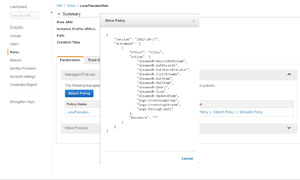 (Enlarge) |
|
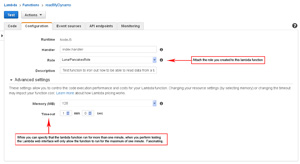 (Enlarge) |
|
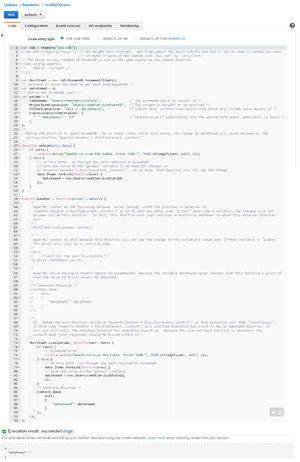 (Enlarge) |
|
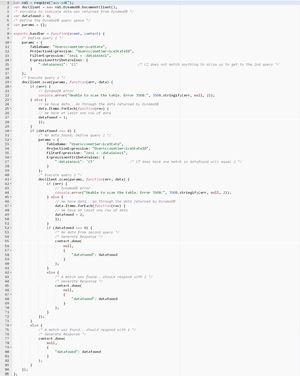 (Enlarge) |
|
|
|
|
|
|
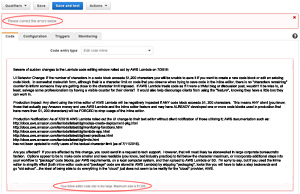 (Enlarge) |
|
|
|
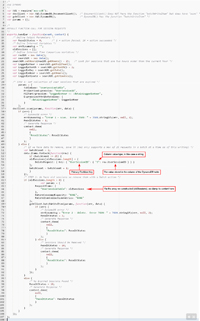 (Enlarge) |
|
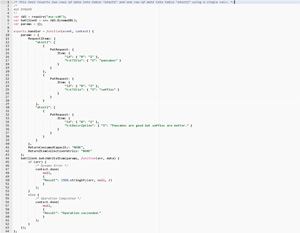 (Enlarge) |
|
var AWS = require("aws-sdk");
var docClient = new AWS.DynamoDB.DocumentClient();
var params = {};
params = {
TableName: "NameOfTable",
Item: {
ID: 123,
AddedBy: "pancakes",
Info: "Some sort of text to be added."
}
};
docClient.put(params, function(err, data) {
if (err) {
/* Generate Response */
context.done(
null,
{
"Error": JSON.stringify(err, null, 2)
}
);
}
else {
/* Generate Response */
context.done(
null,
{
"Success": "You have putted, but not a golf put."
}
);
}
});
|
|
data.Items.forEach(function(row) { ServiceSummary_raw = row.ServiceSummary; }); |
|
ServiceSummary_new = [];
for (var x = 0; x < ServiceSummary_raw.length; x++) {
var blurbtext = ServiceSummary_raw[x];
if (x === 1) {
blurbtext = "[NOTE] " + blurbtext;
}
/* Save the strings to the new list (aka array) which contains the change */
/* It is implied each string value would take the form of {"s": "string text"}. I've added toString() for clarity. */
ServiceSummary_new[ServiceSummary_new.length] = blurbtext.toString();
}
|
|
params = {
TableName: "MyDynamoTable",
Item: {
"RowID": Some-row-id-in-table,
"ServiceSummary": ServiceSummary_new
}
};
docClient.put(params, function(err, data) {
if (err) {
/* Error occurred */
}
else {
/* Execution completed okay */
}
});
|
|
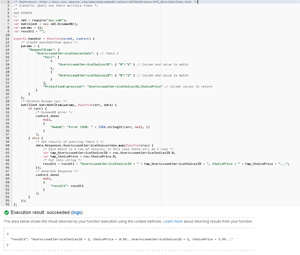 (Enlarge) |
|
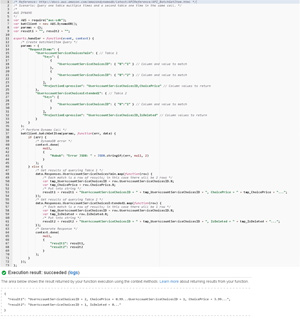 (Enlarge) |
|
|
|
|
|
|
|